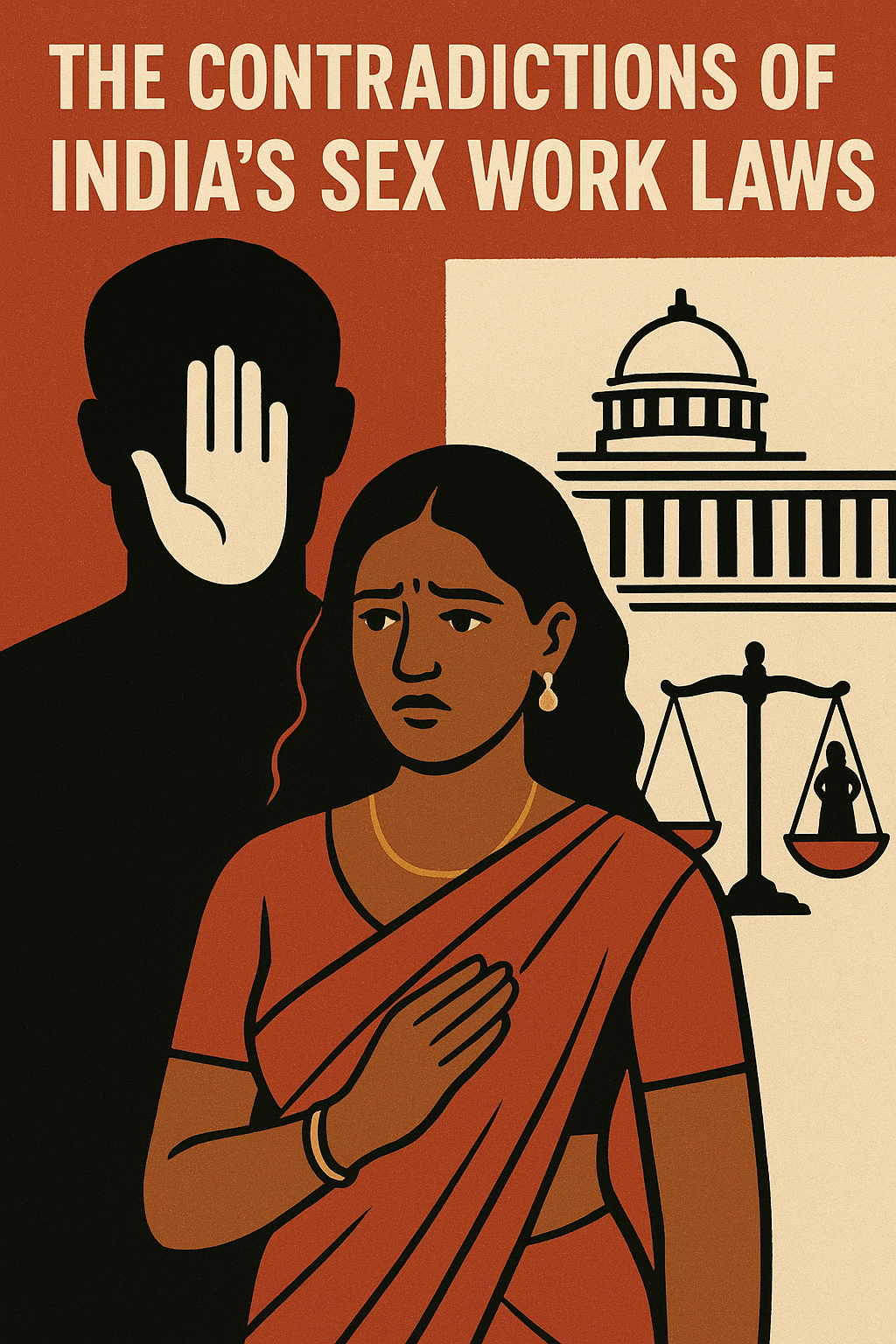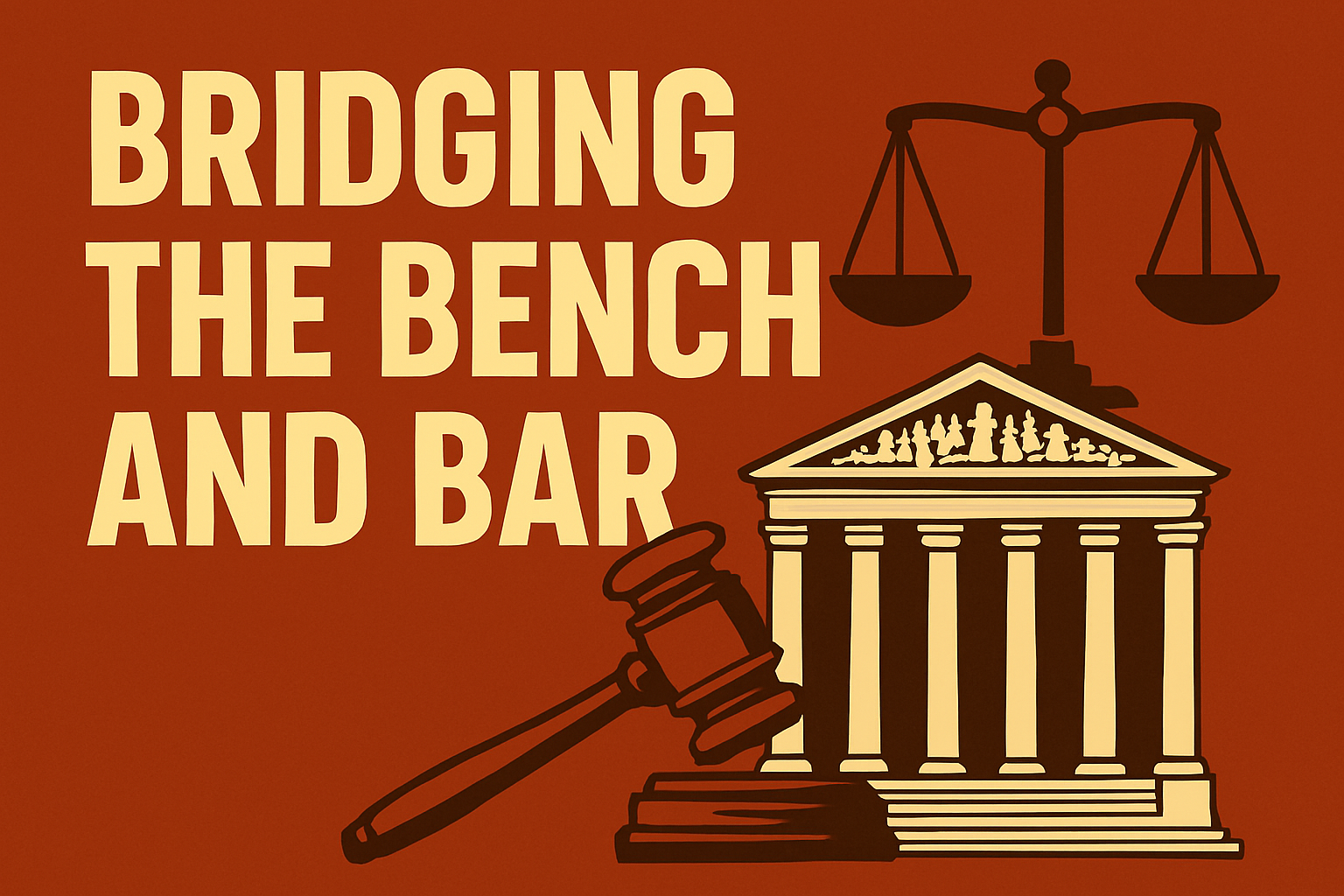



Author: Shivangi Mishra
University: Deen Dayal Upadhyay Gorakhpur University
Introduction
In a significant move aimed at reshaping the judicial recruitment landscape, the Supreme Court of India recently upheld the legality of requiring a minimum of three years of legal practice at the Bar as a prerequisite for entry into the judiciary. This decision, while applauded by many legal professionals, has also sparked a vigorous debate among law students, academicians, and policymakers. The ruling marks a pivotal shift in India’s judicial examination system, bringing into focus the essential question: Should practical experience be a mandatory gateway to the Bench?
This article critically analyses the Supreme Court’s judgment, the constitutional and legal underpinnings of the practice requirement, and its broader implications for the legal and judicial ecosystem in India.
Background of the Controversy
Historically, many Indian states allowed fresh law graduates to appear directly for judicial service examinations. These entry-level civil judge posts, often attracting thousands of aspirants, did not mandate any real-world courtroom exposure. Critics argued that this produced young judges who lacked the maturity and practical experience to adjudicate effectively, especially in complex civil or criminal trials.
The demand for a mandatory period of practice gained traction after several state high courts, notably the Delhi and Madhya Pradesh High Courts, started enforcing similar requirements. However, these were met with legal challenges. The matter reached the Supreme Court through a batch of petitions challenging the rule, primarily under Articles 14 and 19(1)(g) of the Constitution.
The Supreme Court’s Ruling
In the landmark judgment delivered in 2024 (exact case: Tejaswini Pandit & Ors. v. Bar Council of India & Ors.), the Supreme Court upheld the Bar Council and state public service commissions’ authority to mandate a minimum of three years’ legal practice as a condition to appear for judiciary exams.
Key Observations of the Court:
The Court emphasized that courtroom experience provides aspiring judges with essential skills such as case analysis, procedural understanding, and real-life exposure to legal complexities.
The judgment clarified that the classification between fresh graduates and experienced advocates is not arbitrary. It is a reasonable restriction under Article 19(6), serving a legitimate public interest: a competent judiciary.
The Court reiterated that appearing for judicial service is not a fundamental right. Reasonable qualifications can be imposed to enhance institutional integrity.
The Court linked the decision to broader judicial reforms, noting the need to improve both the quality and credibility of the lower judiciary.
Legal and Constitutional Analysis
Article 14 – Equality Before Law
Critics argued that the rule violates Article 14 by creating a class distinction between fresh law graduates and practicing lawyers. However, the Court held that the classification is not only reasonable but essential. Practical experience equips a candidate with insights that cannot be gained through academic study alone.
Article 19(1)(g) – Freedom of Profession
The rule was also challenged as infringing on the right to practice any profession. The Court clarified that judicial service is a public office, not a commercial profession. Moreover, the restriction is well within the scope of Article 19(6), which allows the state to impose reasonable conditions in the interest of the general public.
Doctrine of Proportionality
Applying the doctrine of proportionality, the Court held that the three-year rule strikes a reasonable balance between the right to equality and the need for qualified adjudicators. The requirement is not excessive and aligns with global best practices.
The Need for Reform: Practical Realities-
Disconnect Between Academia and Court Practice:
One of the primary reasons cited in favour of the ruling is the significant disconnect between classroom learning and courtroom practice. A fresh graduate, though academically proficient, may lack the temperament and real-life skills required to handle emotionally charged criminal cases, property disputes, or witness examinations.
Developing Judicial Temperament:
Practical experience inculcates patience, discipline, and ethical values — all critical qualities for a judge. This real-world maturity cannot be imparted through theoretical studies alone.
Better Screening and Quality Control:
By allowing only experienced advocates to apply, public service commissions may be able to reduce the number of applicants and focus on quality over quantity. It also ensures that only genuinely committed candidates make it to the bench.
Criticism and Concerns:
Despite its advantages, the ruling has faced criticism from several quarters.
Exclusion of Meritorious Freshers:
Many high-performing students from National Law Universities (NLUs) and traditional law colleges argue that their academic credentials and internships should suffice. The blanket ban on freshers, they claim, may discourage bright legal minds from entering the judiciary.
Economic and Social Barriers:
Practicing for three years without stable income is not feasible for everyone, especially candidates from rural areas or economically weaker sections. This could inadvertently make the judiciary more elitist.
Impact on Women Aspirants:
Critics fear that the rule may disproportionately affect women aspirants who may face familial or societal pressure to settle early into secure jobs. A delay of three years might deter them altogether.
Need for Structured Internship Over Practice:
Some argue that instead of mandating practice, law schools and bar councils should enforce a robust system of courtroom internships under judges and senior lawyers.
Comparative Jurisprudence-
United State
In the U.S., federal and state judges are usually appointed from among seasoned lawyers with years of courtroom experience. Fresh law graduates are never directly appointed to the bench.
United Kingdom
In the UK, barristers and solicitors must accumulate substantial practice before qualifying for judicial roles. There are also assessments of ethics, conduct, and public service record.
Germany
Germany has a dual-track system where law students undertake extensive apprenticeships post-study before being allowed to sit for judicial or prosecutorial roles.
Lessons for India
India’s new rule aligns with international norms and represents a move towards greater professionalism in judicial appointments.
Policy Suggestions and Way Forward
Encourage bar councils to develop structured mentorship programs where junior lawyers are guided by seniors for meaningful exposure.
State governments and legal aid bodies can offer fellowships or stipends to help young lawyers survive the three-year period.
Allow limited credit for moots, internships, and legal clinics, especially for those from Tier 2 and Tier 3 cities.
To ensure diversity, judicial services can create special quotas for candidates from underprivileged backgrounds, post-practice.
A centralised rule applicable across all states would prevent confusion and ensure uniformity in judicial recruitment standards.
Conclusion
The Supreme Court’s endorsement of a three-year minimum practice requirement for aspiring judicial officers is not merely a regulatory tweak, it is a transformative attempt to reshape the foundational ethos of India’s lower judiciary. This decision arrives at a time when the credibility and efficiency of the judicial system are under constant scrutiny. The court’s vision is clear: India needs not only academically sound judges but also legally seasoned minds who have been forged in the fire of real courtroom practice. In this sense, the ruling does not create an exclusionary barrier; rather, it creates a filter to ensure only serious, experienced, and ethically aware candidates take on the profound responsibility of adjudicating justice.
However, this transformation must be carefully implemented to avoid the risk of making the judiciary inaccessible to large segments of society. If the goal is to uplift the quality of judicial appointments, equal attention must be paid to creating a support ecosystem that allows every capable individual regardless of socio-economic background to meet the new eligibility standards. The onus lies not just with the judiciary or bar councils but with the legal fraternity at large, legal education institutions, and state policymakers.
The Judiciary as a Public Trust
A judicial officer is not just an interpreter of the law; they are a guardian of constitutional values and public trust. This role demands more than just technical knowledge of statutes it requires discretion, empathy, a deep sense of justice, and the ability to navigate complex human behavior. Such attributes are rarely acquired through academic instruction alone. A stint in legal practice even if limited to district courts or legal aid work helps develop the crucial capacity to appreciate procedural nuances, manage case delays, deal with litigants’ anxieties, and respect the principles of natural justice. In this sense, the bench must be an evolution of a lawyer’s journey, not a bypass route.
Challenges Ahead: Avoiding Structural Injustice
Yet, one cannot ignore the possible structural injustices that may emerge. For law graduates who are first-generation lawyers, practicing for three years without adequate income or mentorship can be a daunting challenge. The private practice ecosystem is highly unstructured, and junior lawyers often earn meager stipends or none at all. If the three-year mandate is implemented without institutional support such as paid clerkships, fellowships, or training programs it may reinforce elitism in the judiciary. Women aspirants, especially from rural or conservative backgrounds, may face additional barriers due to familial and societal expectations.
Reimagining Legal Practice as an Inclusive Bridge
To address these issues, the practice requirement must be reimagined not as a hurdle but as a bridge one that provides practical exposure while ensuring inclusivity and fairness. Innovative mechanisms like legal aid fellowships, internships under judicial officers, supervised trial court practice, and bar council stipends could democratize this journey. Law schools should integrate experiential learning more rigorously, perhaps through long-term externships in courts or under senior lawyers. At the same time, state public service commissions must coordinate with bar councils to recognize diverse forms of practice including legal research, mediation, and public interest litigation work.
Towards a Uniform National Framework
Another crucial step forward is to bring about uniformity across states. Currently, judicial service eligibility criteria vary across different jurisdictions, creating confusion and disparity. A national-level policy possibly under the guidance of the Bar Council of India or in consultation with the judiciary can standardize the process, clarify eligibility norms, and provide a consistent roadmap for aspirants. It can also ensure that the three-year rule does not become a rigid mechanism but a flexible, evolving standard adapted to the diverse realities of Indian legal practice.
Final Thoughts: Building a Judiciary for the Future
Ultimately, the success of this reform will depend on the collective will of legal institutions to balance quality with access, rigor with compassion, and professionalism with inclusiveness. The Supreme Court has laid the foundation for a long-overdue reform but the responsibility to build on it lies with law schools, the bar, and the broader legal community. A competent judiciary begins with a competent bar. Bridging the bench and the bar is not just about creating better judges; it is about restoring faith in justice delivery and strengthening the rule of law in the world’s largest democracy.
By encouraging young lawyers to embrace practice before seeking the bench, we are not delaying their journey we are enriching it. And in that enrichment lies the promise of a judiciary that is not only wise in law but also grounded in lived legal experience a true people’s court, in every sense of the word.
References
Supreme Court of India, Judgment dated March 2024.
(Case upholding the three-year mandatory practice rule for judicial aspirants across various state judicial services.)
Article 14 – Right to Equality
Article 19(1)(g) – Freedom to practice any profession
Article 19(6) – Reasonable restrictions on professional rights
Article 233 – Appointment of District Judges
Relevant provisions on enrolment and professional conduct of advocates.
(Related to improvement in conditions and qualifications for judicial officers.)
(Recommendations on enhancing the quality of judicial appointments and role of experience.)
(Discusses quality of judicial services and suggestions to ensure better recruitment standards.)
Articles and summaries from March–June 2024 covering the SC decision and related legal debates.
News and opinion pieces on the 3-year mandate and reactions from law students, bar councils, and judges.
(Comparative models of judicial entry and training from USA, UK, Germany, France, and Australia.)